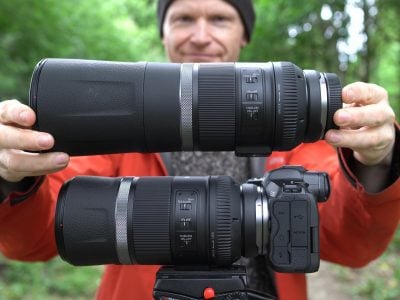Canon RF 600mm / 800mm f11 review
-
-
Written by Gordon Laing
Intro
The Canon RF 600 and 800mm f11 are a pair of relatively compact, light and affordable super-telephoto lenses for the full-frame EOS R mirrorless system. For this review I tested final production samples of both lenses, along with an RF 1.4x tele-converter, all on an EOS R6 body, and all running the latest firmware. In this review you’ll see how both lenses perform when photographing birds in good and poor light, as well as sports, lunar, and even portrait or landscape shots. I’ve put all my results and comparisons into the video review below, but if you prefer written highlights, keep scrolling! Note in the video I say the lens hoods are supplied as standard, but sadly they are optional accessories.
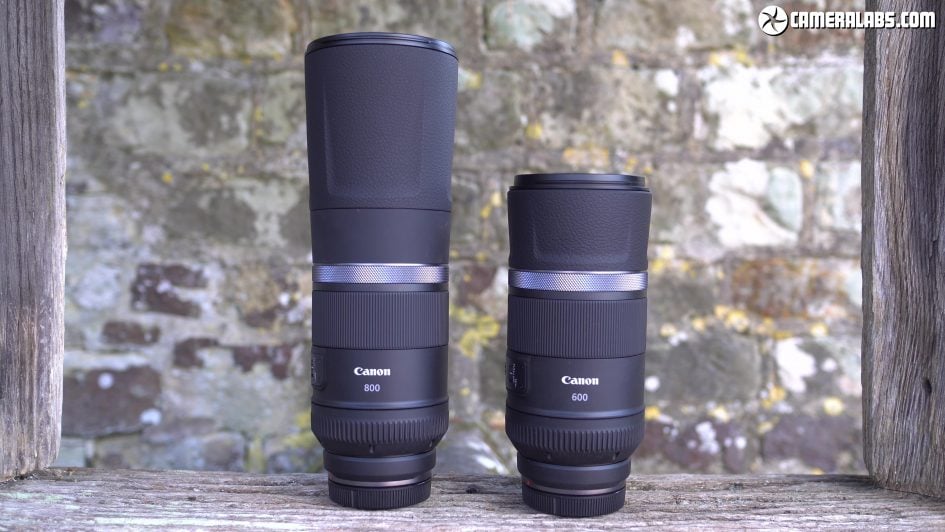
Above: The RF 600mm measures just 200mm long and costs around 700 dollars or pounds, while the RF 800mm measures 282mm long and costs around 900 dollars or pounds. This makes both lenses more portable and lower-priced than most super-telephotos not to mention most big zooms, and during my tests I was easily able to hike with both models plus a body in a medium-sized backpack. Their secret is employing an extending barrel design and a modest f11 aperture, but don’t be alarmed as on a modern mirrorless camera that’s actually a lot more practical than it sounds.
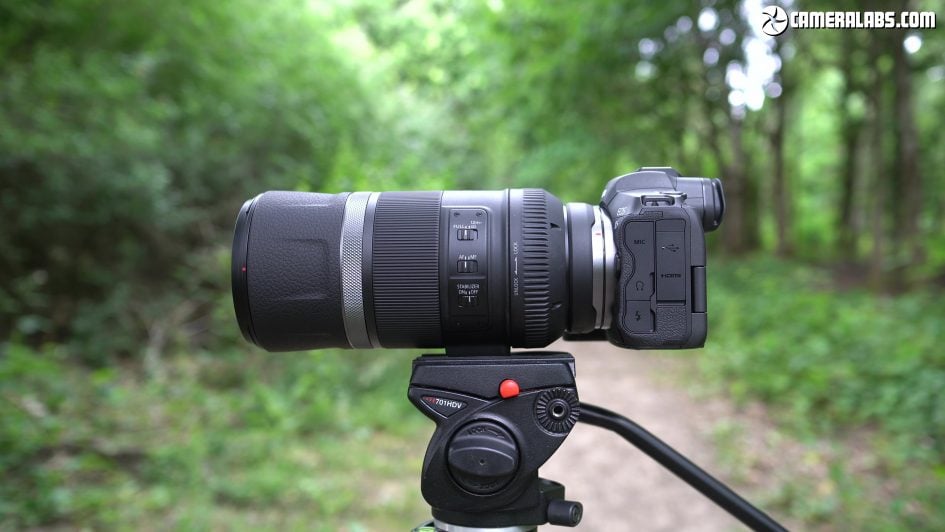
Above: I’m going to explain all of that with lots of examples, but first a quick look at the design of each model, starting with the RF 600mm, a remarkably compact lens that measures just 93x200mm when retracted and weighs 930g. For operation, you need to twist a locking ring, pull the body away, then lock it again for use; you’ll see a warning on-screen if you try to use it unextended or unlocked.
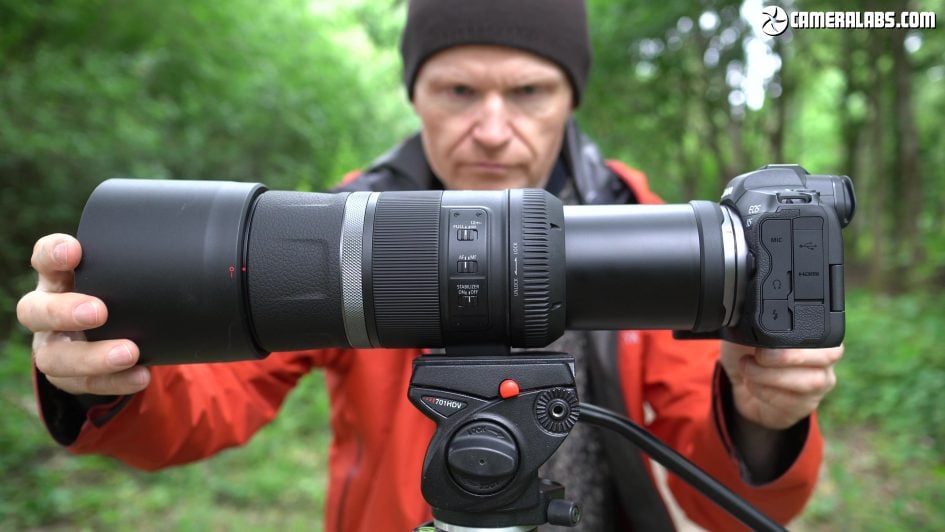
Above: When extended the lens becomes 270mm long, but remains well-balanced when mounted using its built-in tripod foot. In terms of controls, there’s a switch to limit the focus to 12m, a wide manual focusing ring and the RF clickable custom ring at the end. I’ve pictured it here with the optional lens hood – annoyingly since it’s not an L lens, it’s not supplied as standard. Meanwhile, the filter thread is 82mm and the closest focusing distance is 4.5m.
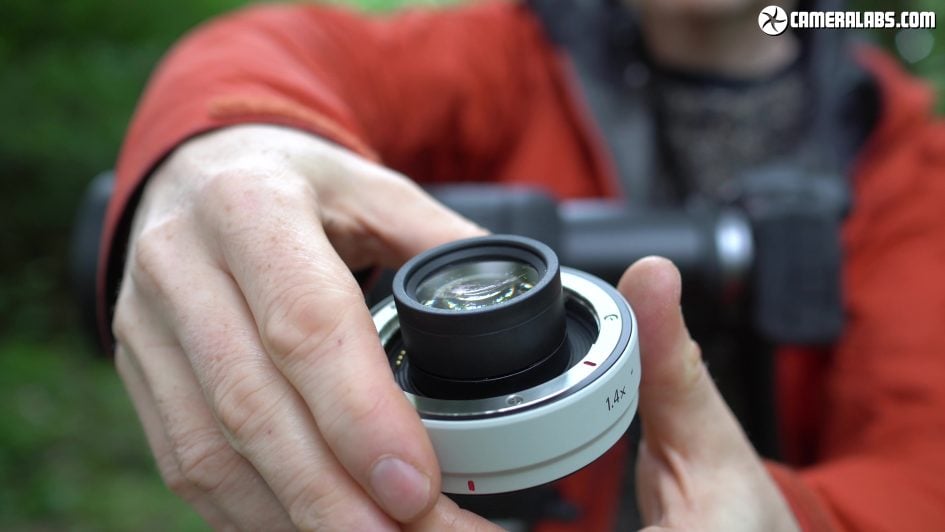
Above: If you fancy longer reach, the 600 works with both the RF 1.4x and 2x teleconverters – this is the 1.4x version which extends the focal length to 840mm and reduces the aperture to f16. With the lens barrel extended and the hood fitted, the RF 600mm becomes unsurprisingly long, but remove the hood and retract the barrel and you’re left with an impressively portable system.
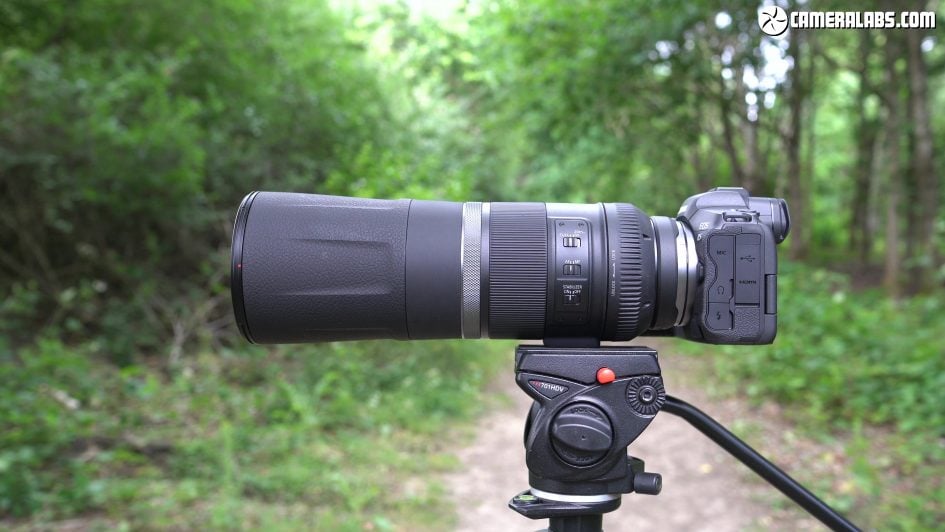
Above: Now for the RF 800mm which at 102x282mm and 1260g is heftier than the 600, but still very portable – less than a foot long when retracted.
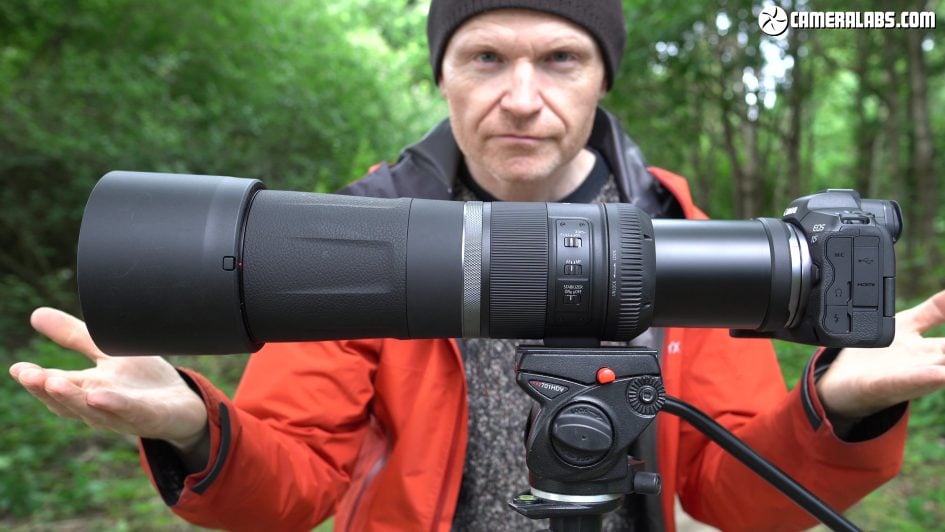
Above: Like the 600, you’ll need to twist the locking ring and pull the body away which extends the lens barrel to 352mm, then twist again to lock it for use. Again there’s a focus limiter – this time to 20m, a smooth manual focusing ring and clicky custom ring; the filter thread this time is 95mm and the closest focusing distance is 6m. I’ve pictured it here with the optional lens hood – again, sadly this is not supplied as standard.
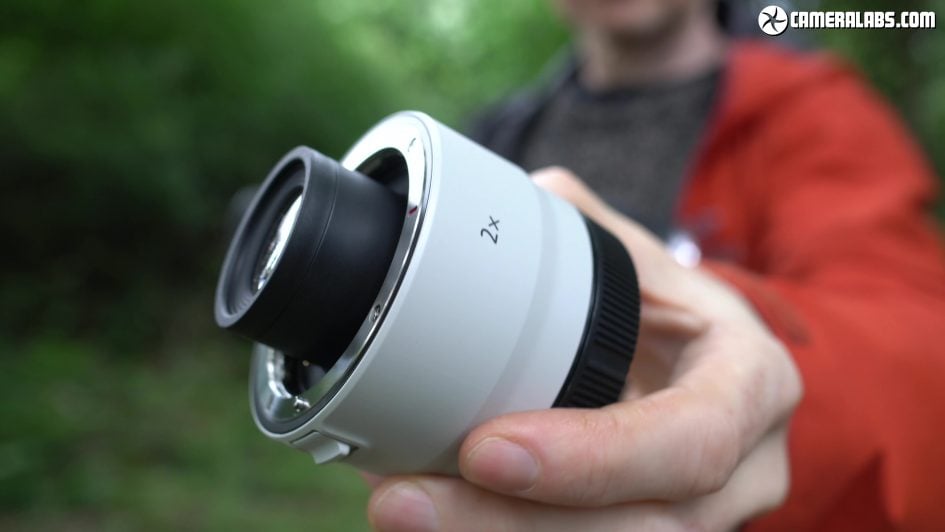
Above: For maximum reach, you can fit either of the new RF teleconverters, and this time I’m showing you the 2x model which doubles the focal length to 1600mm, reducing the aperture to f22. An aperture of f22 sounds hopeless in traditional terms, but again on a modern mirrorless camera it works a lot better than you first assume.
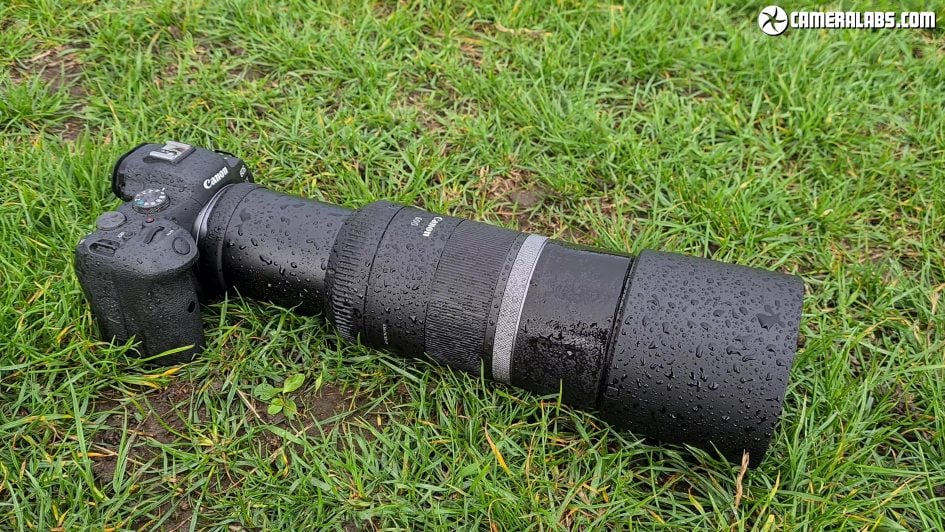
Above: Before going further, I should add neither lens is sealed against dust and moisture, not even including a rubber ring at the mount, which could prove limiting in poor conditions. That said, as you can see, I used both lenses several times during showers with no obvious ill effects, but I made sure I dried the extending portion of the barrels before retracting them. Only time will tell if the extending section proves a weak-point in the future; if you own either lens and have had bad experiences, let us know in the comments.
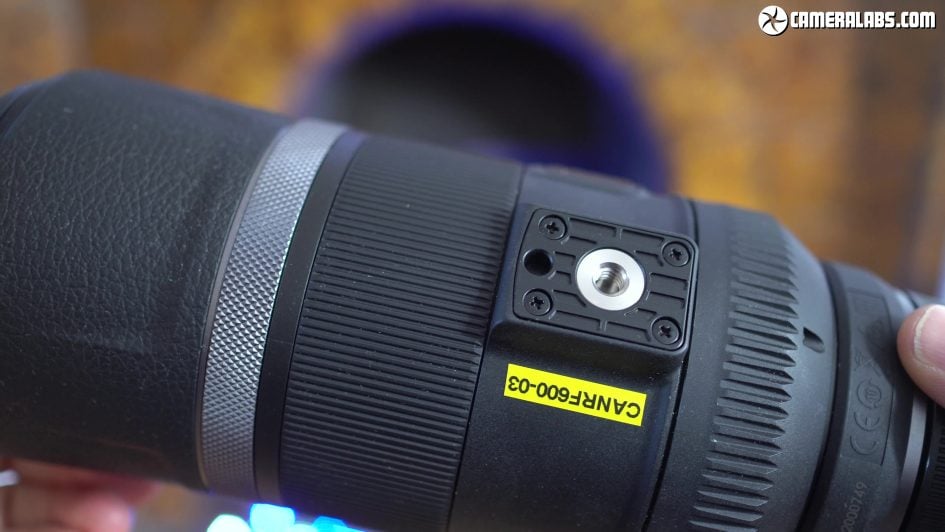
Above: In another move to keep cost and weight down, both lenses may include built-in tripod feet, but sadly don’t go as far as offering a collar to rotate the lens while it’s mounted. As a consequence shooting in the portrait or tall shape will prove challenging from a tripod, even with the help of a locking pin in the foot.
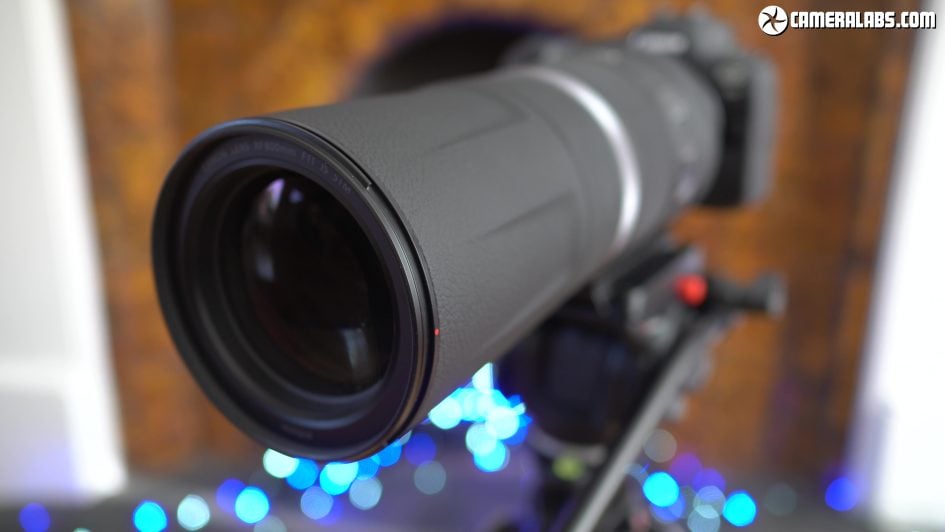
Above: But the biggest elephant in the room is of course the f11 aperture on both lenses, and if you’re coming from a DSLR, this will ring alarm bells for three main reasons: first, the view will be very dim through an optical viewfinder, second, older cameras will struggle or refuse to autofocus at all, and third, small apertures will demand the use of higher ISOs to compensate, particularly if you need to keep the shutter speed high to freeze any motion. But modern mirrorless cameras can address the first two issues with fair success. First, the brightness of screens and electronic viewfinders can simply be increased, and while this can also see noise levels or lag increase too, I found the view with the R6 remained perfectly usable in my tests even at dusk or during rain.
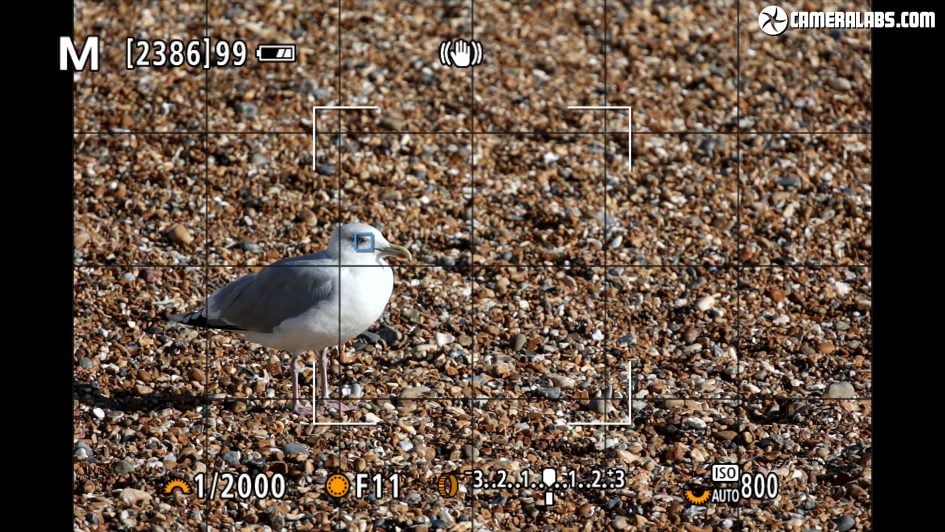
Above: Secondly the EOS R bodies are able to autofocus pretty well with f11 lenses, and given enough light, will continue to autofocus at f16 and even f22 when the teleconverters are fitted. At f11 or smaller though, the autofocus area on the R bodies is reduced from the full frame to a large square box in the middle that, to be fair, covers a similar area to the viewfinder AF systems of many DSLRs. Within that area, the R5 and R6 are able to deploy their full AF technologies, including eye detection for animals, but if the subject strays outside, you’ll no longer be able to focus on it. So like shooting with DSLRs, you have to be more careful with framing to achieve autofocus. Also notice the hand icon at the top indicating stabilisation but not the enhanced plus version of all other native RF lenses to date. The RF 600 and 800mm do include optical stabilisation which Canon claims is good for up to four stops of compensation – in my tests I managed three to four, so it’s useful but not amazing and presumably that’s why they don’t earn the plus symbol. I’ll discuss autofocus in more detail in just a moment.

Above: The third issue is shooting at high ISOs and there’s no getting away from the fact that if you have an f11 lens – or slower still with the TCs – then you’ll be relying on higher sensitivities than normal with an inevitable loss of quality. Even when mostly static subjects allowed me to reduce the shutter speeds, I was rarely operating below 640 ISO, and once my shutter was increased to freeze action – like birds-in-flight – I was regularly around 1600 ISO in daylight and beyond 10000 ISO once the light fell. At dusk or in very shaded areas, 25600 ISO was not uncommon. This is inevitable, but the question is whether your images are acceptable at these sensitivities? Modern full-frame sensors have come a long way and as you’ve seen in these examples, the R6 may be delivering greater detail and cleaner results than you expected at very high sensitivities. As to whether it’s good enough for you personally is another matter. The bottom line is if you want to maintain high shutter speeds at lower ISOs, you’ll simply need more light, which under the same conditions means faster lenses and they’re neither cheap, nor light to carry. It is what it is.

Above: Ok, now let’s look at image quality across the frame and since neither lens is able to close its aperture further, it’ll be a mercifully short section. You’re looking at the RF 600mm f11 on the R6 here, and zooming-in reveals a well-corrected image with lots of fine detail.
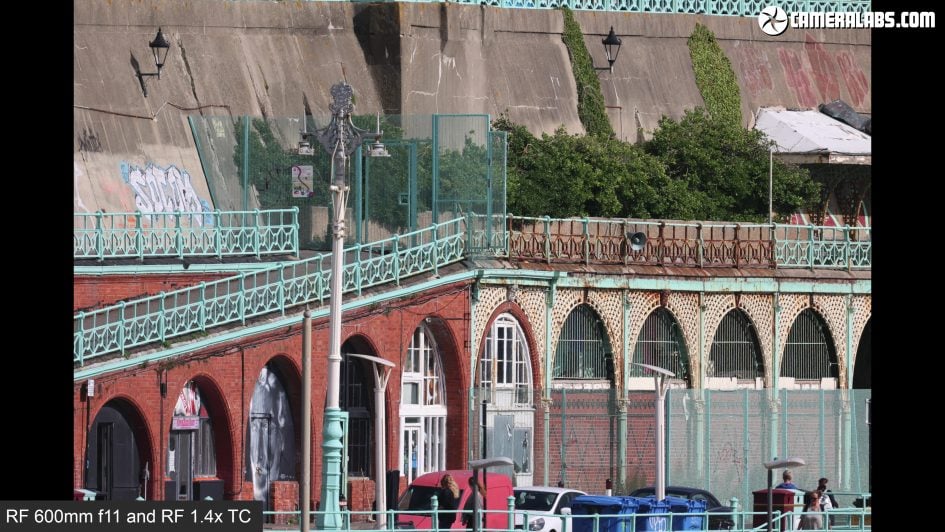
Above: Now here’s the RF 600mm fitted with the RF 1.4x teleconverter for an 840mm equivalent field of view, albeit now operating at f16. Taking a closer look shows there’s perhaps a little less bite but a little more detail here, although as always the issue of rising heat will limit the potential of long lenses over long distances.

Above: Now switching to the RF 800mm f11 on the R6, and again the results can look great, sharp across the frame although again with the caveats of heat rising and depth of field. I realise few relish shooting at f16 or f22, but I’d have liked to be able to close the aperture to increase the depth of field sometimes.
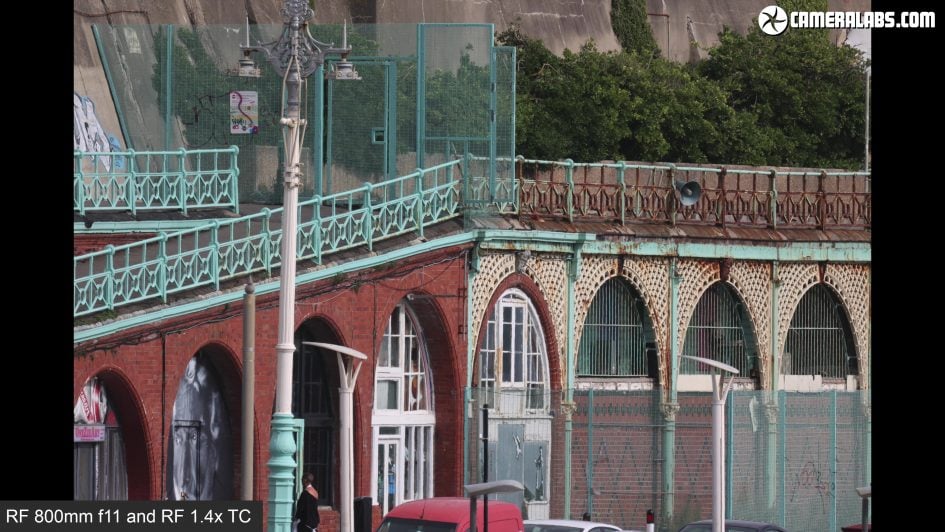
Above: When fitted with the RF 1.4x teleconverter, the 800 is transformed into an 1120mm f16 lens, and as before there’s a minor reduction in contrast, but still potential for a little finer detail. Again the biggest limiting factor for detail over long distances is heat rising.

Above: While it’s easy to dismiss super-telephotos for distant landscape shots though, I actually love the effect they can have on otherwise familiar scenes. You’ll see more examples on my samples page.

Above: Speaking of depth-of-field, it’s also easy to assume there’s little chance of blurring effects at f11, but if the background’s sufficiently far behind the subject, you will enjoy some separation. To be fair, it’s fairly easy for me to find a distant backgrounds when photographing along the coast, but once you’re in deeper foliage like woodlands or even trees in your garden, it’s inevitable that backgrounds will become busier and more distracting. Again it is what it is. If you want more blurring under the same conditions, you’ll need a faster lens that’s heavier and more expensive.
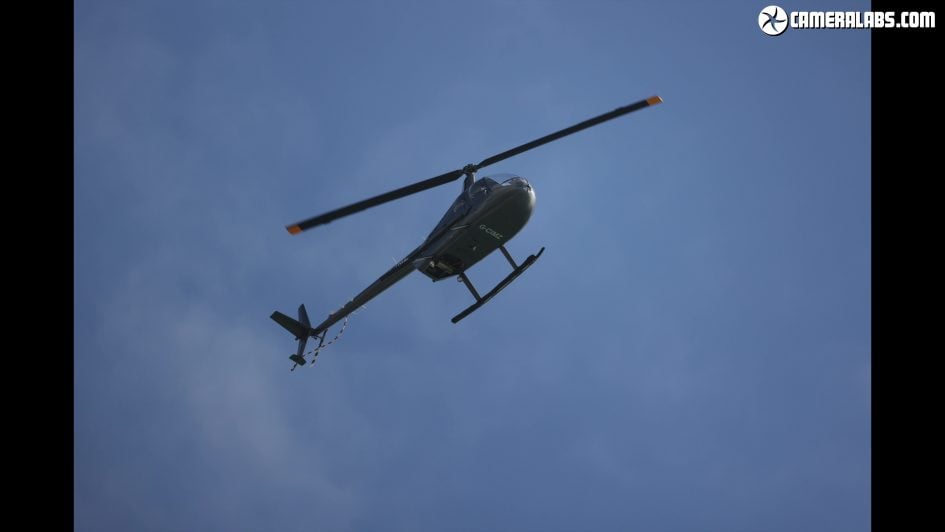
Above: While low-light wildlife photographers may scoff at f11 telephotos, they’re perfectly adequate for other types of subjects, including airshows. At the time of testing there was nothing particularly exciting in my local skies, but here’s a helicopter passing overhead, uncropped with the RF 800mm for an idea.
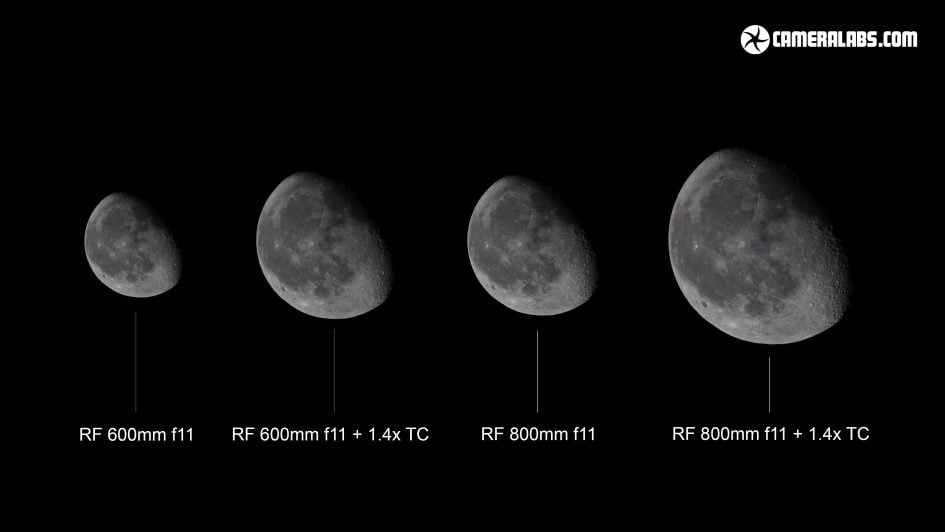
Above: Lunar and Solar photography are also well within the capabilities of small aperture telephotos. Here’s four images of the Moon, all uncropped vertically, indicating the size you’ll achieve with both lenses alone or when fitted with the RF 1.4x teleconverter. From left to right: RF 600mm, RF 600mm with 1.4x TC, RF 800mm, RF 800mm with 1.4x TC. I was impressed by the degree of detail on both lenses and they’re ideal for high power work.
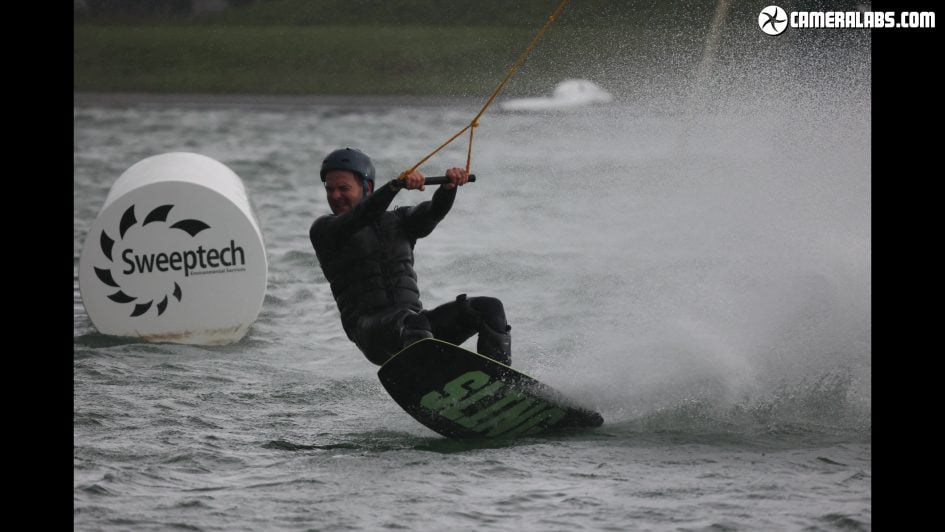
Above: Distant sports are also ideal for super-telephotos, although to maintain fast shutter speeds you’ll need reasonable light levels. That said, these quick bursts of wakeboarding and practice wind-surfing were taken during a rain shower at around 3200 ISO in order to achieve a 1/2000 shutter.
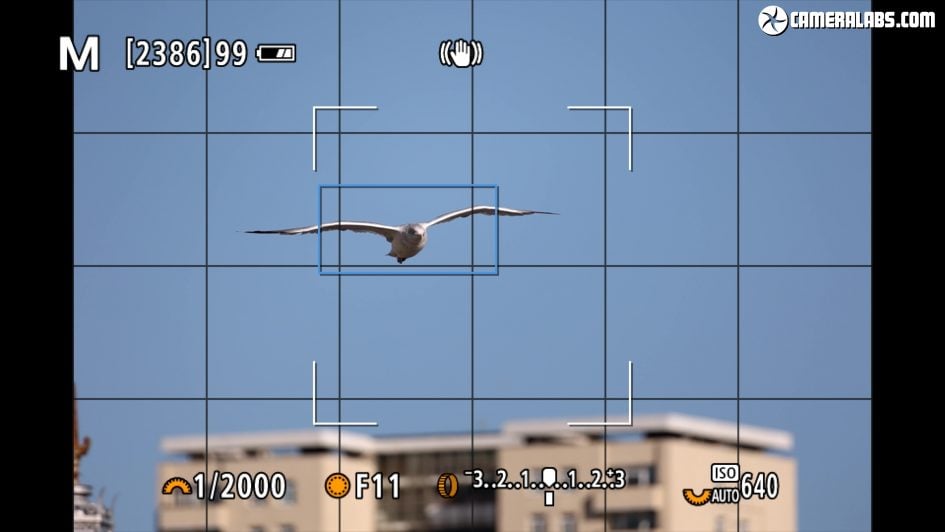
Above: Living on the coast, my primary targets for super-telephotos are of course seagulls and during my tests I was able to try out both RF lenses in mid-day and dusky conditions, as well as during light showers. I already knew the animal eye-detection on the R5 and R6 worked a treat with shorter, brighter telephotos, so wondered how the experience would compare with longer and dimmer lenses. The answer was unsurprisingly not quite as well, but still very usable indeed. I assumed focus or light-levels would be ever-present issues, but under fair conditions they effectively disappeared and the biggest challenge was keeping the erratic birds inside the square AF area at long focal lengths, especially in blustery wind. But even if they strayed within the box for a split second, the R6 snapped into focus and allowed me to fire-off a few well-focused frames with ease. Now to put it in perspective, the R6 does currently represent the best-case scenario for focus in the initial four EOS R bodies, operating in light levels down to -6.5EV versus -6EV on the R and R5, or -5EV on the RP. Those other models will find it harder to keep focusing as light levels fall, but I still found the R6 happily locked-onto animal and bird eyes even at dusk. The biggest issue in low light is the highest sensitivity you’re willing to use. Even at 25600 ISO, I had to reduce my shutter speed to 1/125 as the light fell and had to switch to animals that kept mostly still. Again if you need faster shutters or lower ISOs in low light, these are not the lenses for you.
Check prices on the Canon RF 600mm at B&H, Adorama or WEX or check prices on the Canon RF 800mm at B&H, Adorama or WEX! Alternatively get yourself a copy of my In Camera book or treat me to a coffee! Thanks!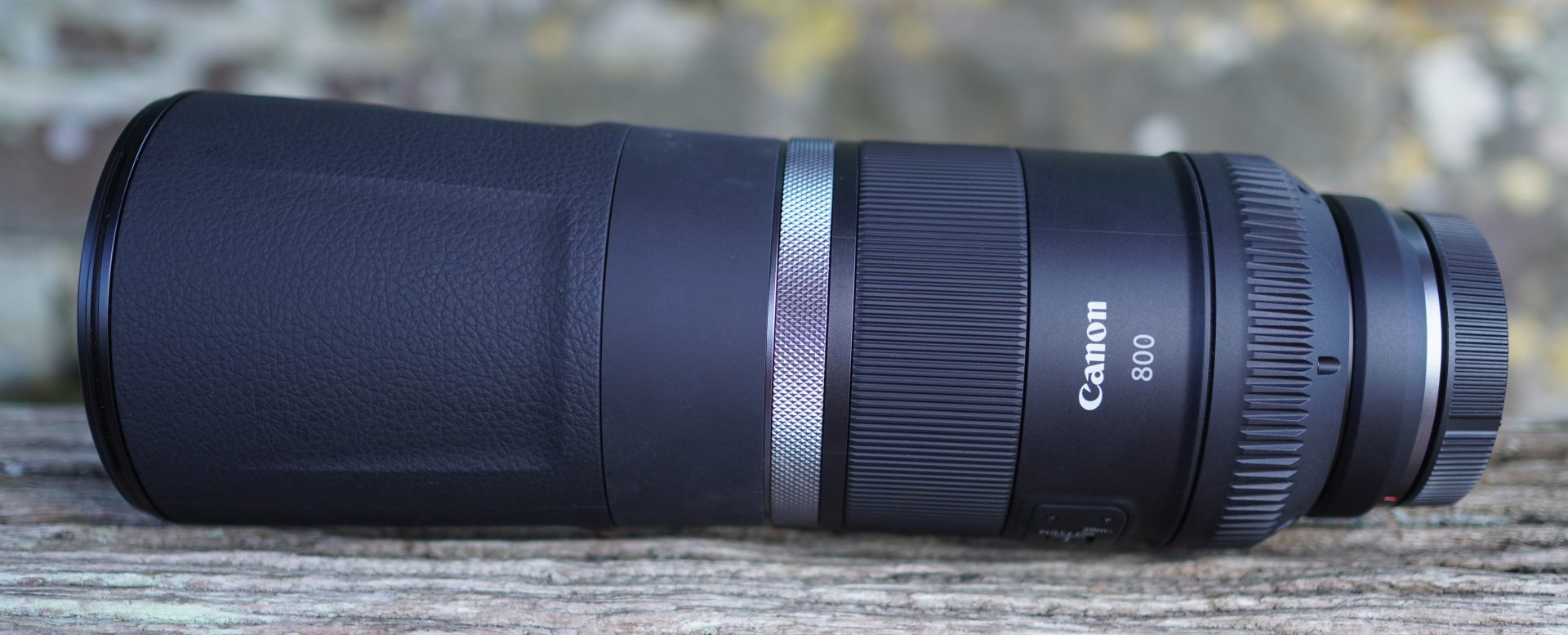
 The Canon RF 600mm and 800mm f11 are relatively light and affordable super-telephoto lenses for the full-frame EOS R mirrorless system. An aperture of f11 may ring alarm bells on older cameras, but the EOS R bodies can autofocus at f11 - or even at f16 and f22 when using tele-converters - in all but the dimmest conditions, while the brightness of their viewfinders automatically increase to avoid the dim image you’d get with a DSLR. Meanwhile a non-adjustable aperture and a fixed tripod foot rather than a rotating collar allow weight and costs to be kept down. In practice both lenses proved remarkably usable, successfully tracking birds in flight and various sports in good to fair conditions, while also proving more than capable for aviation or lunar photography. The f11 aperture does however prove limiting at dus or in shaded areas, inevitably bumping you up to the highest sensitivities while also delivering modest blurring on closer backgrounds. If you want a shallower depth-of field or to maintain faster shutters or lower ISOs in dim light, Canon has plenty of options but large aperture telephotos are neither light nor cheap. Ultimately few lenses offer the reach, portability or affordability of the RF 600 and 800. They may not suit high-end wildlife photographers, but for the rest of us open up a World that was literally out of reach. Which to buy depends on the subjects you want to capture. I found the RF 600mm f11 the more flexible of the pair, suitable for large birds, and more sports and landscapes, while the shorter focal length and better stabilisation made it easier to aim and film; I also preferred its greater portability. But if you’re photographing smaller or more distant wildlife, Sea sports or the Moon, no lens is too big and the RF 800 will be your preferred choice. Both share similar image quality and come Highly Recommended so long as you understand and can work with their limitations.
The Canon RF 600mm and 800mm f11 are relatively light and affordable super-telephoto lenses for the full-frame EOS R mirrorless system. An aperture of f11 may ring alarm bells on older cameras, but the EOS R bodies can autofocus at f11 - or even at f16 and f22 when using tele-converters - in all but the dimmest conditions, while the brightness of their viewfinders automatically increase to avoid the dim image you’d get with a DSLR. Meanwhile a non-adjustable aperture and a fixed tripod foot rather than a rotating collar allow weight and costs to be kept down. In practice both lenses proved remarkably usable, successfully tracking birds in flight and various sports in good to fair conditions, while also proving more than capable for aviation or lunar photography. The f11 aperture does however prove limiting at dus or in shaded areas, inevitably bumping you up to the highest sensitivities while also delivering modest blurring on closer backgrounds. If you want a shallower depth-of field or to maintain faster shutters or lower ISOs in dim light, Canon has plenty of options but large aperture telephotos are neither light nor cheap. Ultimately few lenses offer the reach, portability or affordability of the RF 600 and 800. They may not suit high-end wildlife photographers, but for the rest of us open up a World that was literally out of reach. Which to buy depends on the subjects you want to capture. I found the RF 600mm f11 the more flexible of the pair, suitable for large birds, and more sports and landscapes, while the shorter focal length and better stabilisation made it easier to aim and film; I also preferred its greater portability. But if you’re photographing smaller or more distant wildlife, Sea sports or the Moon, no lens is too big and the RF 800 will be your preferred choice. Both share similar image quality and come Highly Recommended so long as you understand and can work with their limitations.



